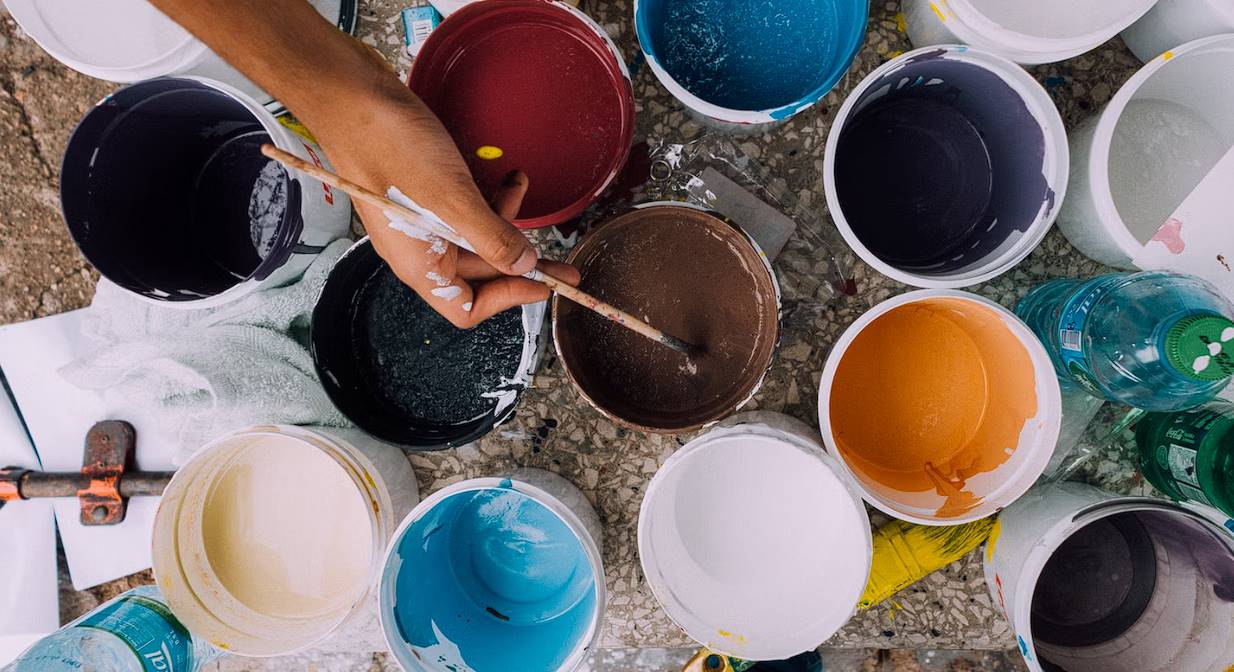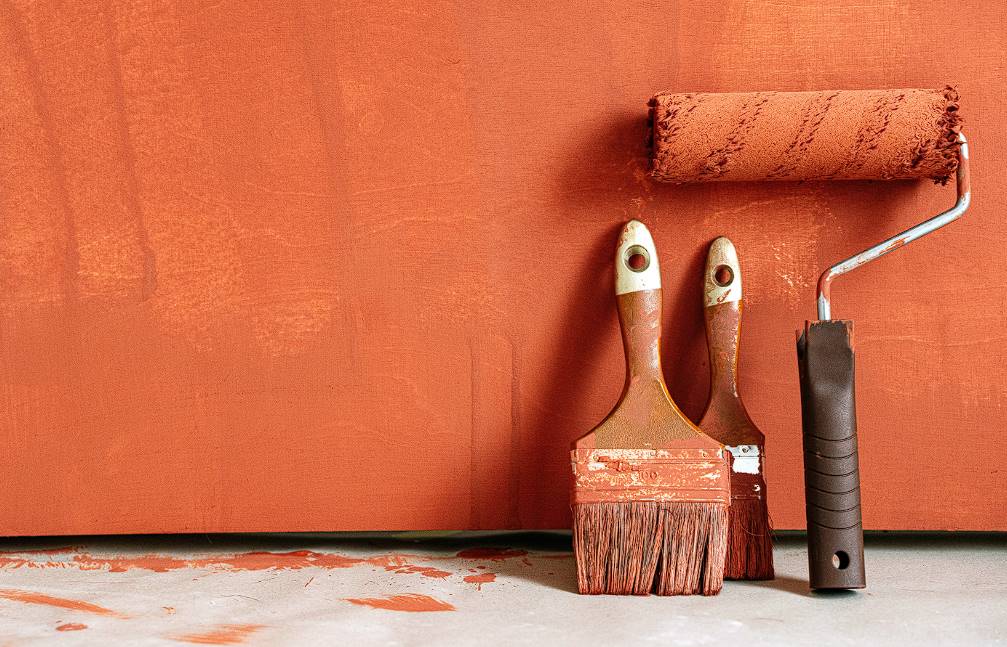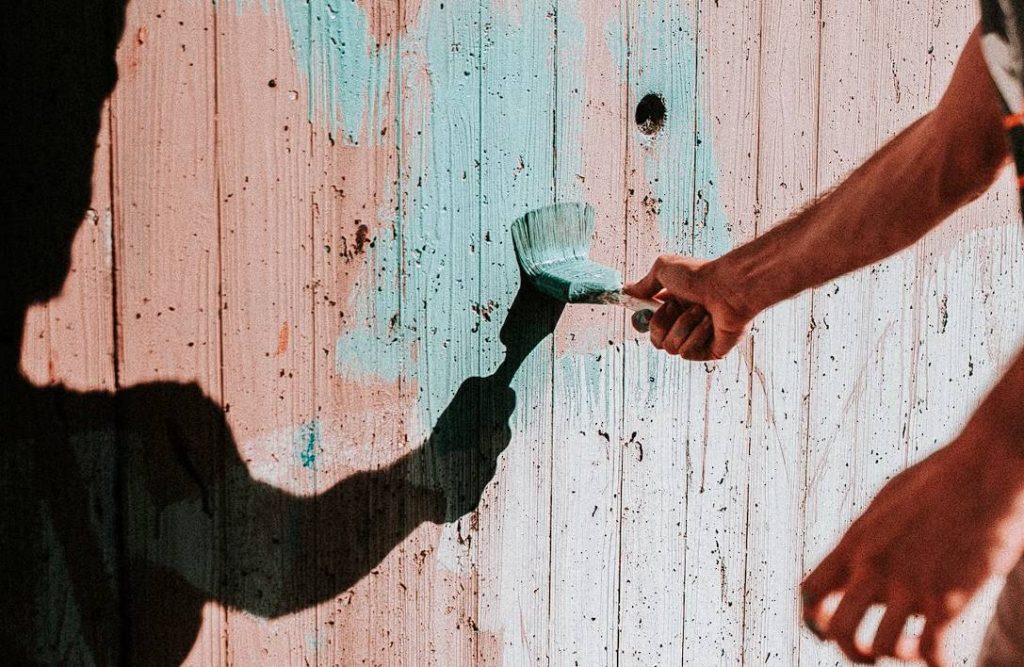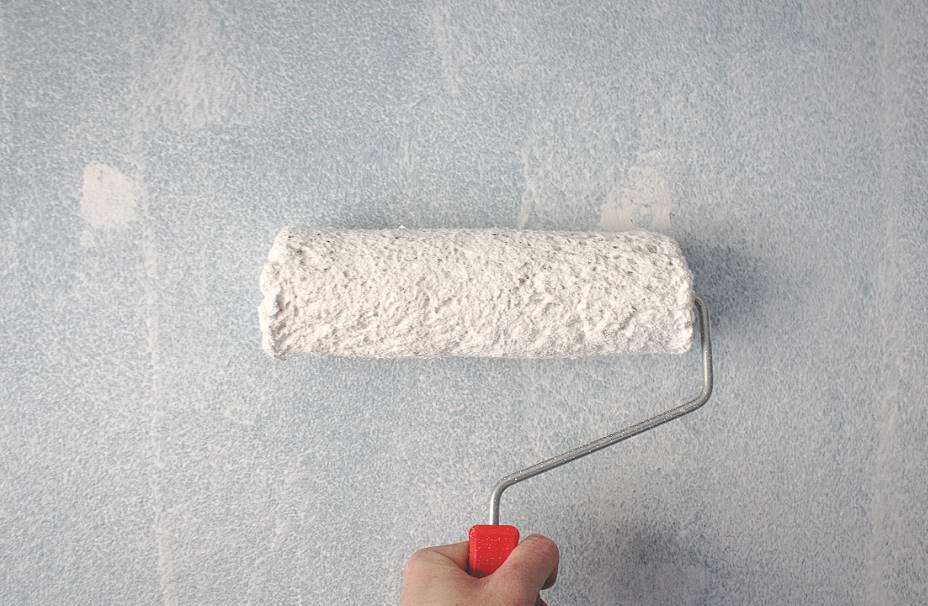Do you know your way around the paint store? Have you ever thought about how paints are classified and what the differences are between them? In this piece, we'll dig into the intriguing world of paints and examine the numerous ways they can be classified. Paints play an important role in our daily lives, whether as a decorative colour on a wall or as a protective covering on a surface. Let's go on an adventure to learn about the various ways that colours are classified.
Different types of paint fall into several groups based on their composition and intended use. Primers, varnishes, and stains are also considered speciality paints. Other types of paints include water-, oil-based, latex-based, enamel-based, and speciality paints. Many different kinds of paint are designed for a certain task. If you know how paint is classified, you can select the best paint for your tasks, maximising the work's quality and extending the paint's life.
However, there is still more to discover! In this extensive piece, I'll detail each paint category, detailing its individual properties, benefits, and ideal applications. This article will educate you with useful knowledge, whether you are a DIY enthusiast, a professional painter, or just curious about the world of paints. Come with us as we explore the wondrous universe of colour contained in a paint can.
Understanding The Basics: Paint Composition
Creating a balanced paint product requires several ingredients and tools, all of which go into the composition of the paint. Pigments, binders or resins, solvents, additives, and fillers are the mainstays of paint formulation and other components that play important roles in the end product.
Pigments, tiny particles reduced to a fine powder, are the paint's bright essence, giving it its colour. These micro engines infuse each stroke with vitality and personality, turning a lifeless canvas or dull surface into an arresting work of art. Binders or resins, working in the background, glue the pigment particles together and keep them securely adhered to the painted surface. Their steady presence ensures durability, keeping the artistic vision safe for the long haul.
The paint's solvents, which are liquids with a wide range of applications, control the paint's consistency and viscosity. They managed to dissolve the binders and create the ideal medium for smooth brushstrokes or applications using any way they wanted to. Solvents are useful tools for artists because they may be used to achieve a wide range of effects, from a thick and velvety feel to a smoother, more fluid motion.
In addition to these base materials, additives play the role of catalysts by imparting unique qualities to the paint that improve its overall efficiency. Preservatives prevent the paint from spoiling, increasing its shelf life and keeping it looking new and vivid for longer. With the help of thickeners, painters can manipulate the paint's consistency to sculpt textures and produce stunning three-dimensional effects. Drying agents hasten the drying process, cutting down on waiting times and transforming wet layers into solid, long-lasting works of art. Colours can last longer without deterioration thanks to UV stabilisers, which shield them from the sun's rays.

Classifying Paints By Type
Do you ever wonder how different colours of paint are categorised? A dizzying array of paint colours and finishes makes it difficult to know where to start when researching paint types. Each style of paint, from acrylics to oils to enamels to watercolours, has advantages and limitations. How do we know which paint is best for our artwork or house renovations in this rainbow of options? The composition, drying period, and intended purpose of paint can be used to classify it into one of several broad categories.
Cement and Lime Washes
The most long-lasting and adaptable matt finish for rendered masonry walls comes from lime and cement washes. This is because they don't prevent moisture from evaporating or contain any waterproofing components. Water, lime, and pigments were this paint's original components, known as limewash. Cement washes (like Porter's Boncote cement paint) debuted much later. Exterior rendered masonry has cement washes applied by painters. They come in a variety of pre-mixed hues that may be purchased commercially. Here's how to use these paints:
- If the wall surface you intend to paint is not porous or absorbent, you should wet it before beginning and consult a professional.
- You'll need a bonding agent if you want to paint over acrylic.
- These coatings are permanent, so stick to the initial setting.
Brick Wash
A thin, red brick wash was used to increase the durability and aesthetic appeal of low-quality bricks without changing the bricks' original gloss or colour. This is a recipe for a low-cost but effective brick wash:
- Combine 4 ounces (or 113 grammes) of adhesive size (animal glue) with 4 gallons (18 litres) of water and heat until the glue melts.
- Mix in a pound of alum (aluminium and potassium sulphate) while it's hot.
- Mix in the colourant (the powdered red oxide) once it has cooled.
- Try different amounts of Spanish brown tint or red oxide to achieve the desired shade.
Acrylic (Latex) Paints
Emulsion paints, which are water-based and typically created with synthetic binders, come in various colours. Polyvinyl acetate (PVA), acrylic, or a copolymer of the two are the resins used in binders. Inorganic pigments made mostly from coloured earth and metals have been mainly supplanted by petroleum and coal tar oil colours. The majority of interior and outdoor paints today are acrylics. They dry quickly and have a thin layer that may be reapplied multiple times.
Acrylic paints for outdoor woodwork come in a wide variety from various manufacturers. These paints stand up better to the elements and fade from the sun's beams. Acrylic paints, especially gloss acrylics, are less likely to fade or shatter over time. Fascias, posts, and trimmings permanently installed on the outside of a building are more suitable to these adhesives than windows and doors that are frequently opened and closed. Because they trap moisture and harm brickwork and paint, they should not be used on historic masonry walls.
Oil Stains
Two pounds (0.906 kilogrammes) of colour oxide to one gallon (4.54 litres) of oil, plus a little turpentine to ensure stain-penetrated lumber, is the standard recipe for making oil stains. Burnt amber (brown) and burnt amber + red oxide (red-brown) were the most common colour oxides. In the past, yellow colour oxides were rarely included in external oil stains. White, cream, or stone paint on trim and exterior panels is a common exterior finish for Queensland's historic wooden structures.
Wax Ochres Or Japan Wax
Black or brown coloured varnish thinned with turpentine has been used on wooden floors since colonial times. Coating the margins of interior timber flooring and covering the rest with carpets or cloth was popular in the late 1700s and early 1900s.
Water-Based Calcimine (Kalsomine) And Distempers
Calcimine and distempers are both washes that use water as their primary solvent. They allow water to evaporate from the surface of the plaster after it has permeated the early brickwork, which was often soft and porous. Size (a gelatinous solution used as a binder in water paints to create a cost-effective dead flat finish) is added to the mixture of whiting and colour to keep it all together in the water. Used for walls and ceilings, their quality varies according to who made them.
Oil-Bound Distempers
Compared to limewash, oil-bound distempers (Hollis distemper, an old Walpamur water paint) have the benefit of sticking to Portland cement renders, despite their identical look. Between the 1930s and the 1960s, oil-bound distempers were stigmatised because their waterproofing and durability coatings failed to respond to the addition of petrifying liquid.
Oil (Enamel) Paints
White lead (replaced by zinc oxide and titanium dioxide) and linseed oil are the foundation of oil (enamel) paints, which are then coloured with various pigments. Painters coated many different surfaces with enamel, both inside and out.
Because of their great moisture resistance, hardwoods were historically painted with glossy oil-based paints (gloss enamels). This is the top-tier paint for use on glass surfaces. Oil paint covered with varnish was a frequent early finish for early high-use areas like kitchens.
Stains And Waxes
Stains and waxes, like shellac and French polish, are paints diluted with spirits. Joinery, furnishings, and other uses involving the interior of a building.
Varnishes
Varnishes can be thinned with oil or spirit, typically applied on wood or metal. A durable and glossy surface is achieved by applying them over previously applied paints, stains, or bare wood. Since clear coatings tend to wear out quickly in the elements, they are typically reserved for indoor use.
The Function Of Paints
Colourful, textured wall paint serves a function beyond aesthetics. Paints are useful because they protect surfaces, extend their lifespan, and can even improve air quality inside a building. What, though, do paints serve other than as a decorative medium? Paints have evolved to serve multiple purposes, such as protecting against fire, heat, and sound. Some of the most important uses for paints are:
Protection
Paint's principal purpose is to shield objects from the elements and other environmental hazards like water and sunlight. Paint provides a barrier against the elements, preserving the underlying material from rust, decay, and wear and tear.
Decoration
Paint is commonly used as a decorative element because it improves a surface's visual appeal. It offers a wide range of colour, texture, and pattern possibilities, fostering individuality in both interior and exterior design.
Concealment
Surface flaws, stains, and other defects can be hidden with a fresh coat of paint. By hiding flaws like scratches or peeling paint, it helps to produce a more unified overall look.
Identification
Marking boundaries, identifying traffic lanes, labelling things, and colour-coding distinct locations or pieces of equipment are just a few of the many uses for paint. Colour and pattern can be employed as visual signals and information carriers.

Preservation
Protective coatings and specialised paints prolong the life of surfaces, buildings, and other items. For instance, anti-corrosive coatings are utilised for metal surfaces, while wood is preserved against rot and insects.
Safety and Hygiene
Paint can have practical qualities that enhance cleanliness and security. For instance, antimicrobial paints are great for places like hospitals, labs, and food processing facilities because they prevent the spreading of bacteria and fungi. Paints designed to resist fire act as a barrier that slows the spread of flames.
Absorption and Reflection
Depending on the ingredients, paints can either reflect or absorb light. High-solar reflectance paints are one type of reflective paint that can help cut down on energy costs and cooling needs. However, porous paints serve an acoustical function by lowering ambient noise.
Ease Of Maintenance
Paints with specific qualities, including washable or stain-resistant, simplify upkeep and cleaning. These paints may be cleaned frequently without diminishing appearance or sheen, making them ideal for high-traffic or stain-prone areas.
Frequently Asked Questions
Latex paint and acrylic paint are often used interchangeably, but there is a slight difference. Latex paint is a type of water-based paint that uses synthetic latex polymers as binders. Acrylic paint, on the other hand, is also water-based but uses acrylic polymers as binders. In practice, both terms are often used to describe the same type of paint.
Yes, paints can be tinted or mixed to create custom colors. Most paint stores offer a wide range of colorants that can be added to base paints to achieve desired shades. It's important to follow the manufacturer's instructions and conduct small tests to ensure accurate color matching and consistency.
In most cases, it is not advisable to mix different types of paints together, as they may have different chemical compositions, drying times, and application requirements. Mixing paints of different types can affect their performance, adhesion, and durability. It's best to use paints as recommended by the manufacturer.
Primers are preparatory coatings applied before the paint to enhance adhesion, improve coverage, and promote better paint durability. They help create a smooth and even surface, especially on porous or uneven substrates, ensuring that the paint adheres properly and delivers the desired results.
A matte finish paint has a flat and non-reflective surface. It offers a smooth and velvety appearance while hiding imperfections on the surface. Matte finish paints are commonly used for interior walls and ceilings in areas where a low sheen or glare is desired.



